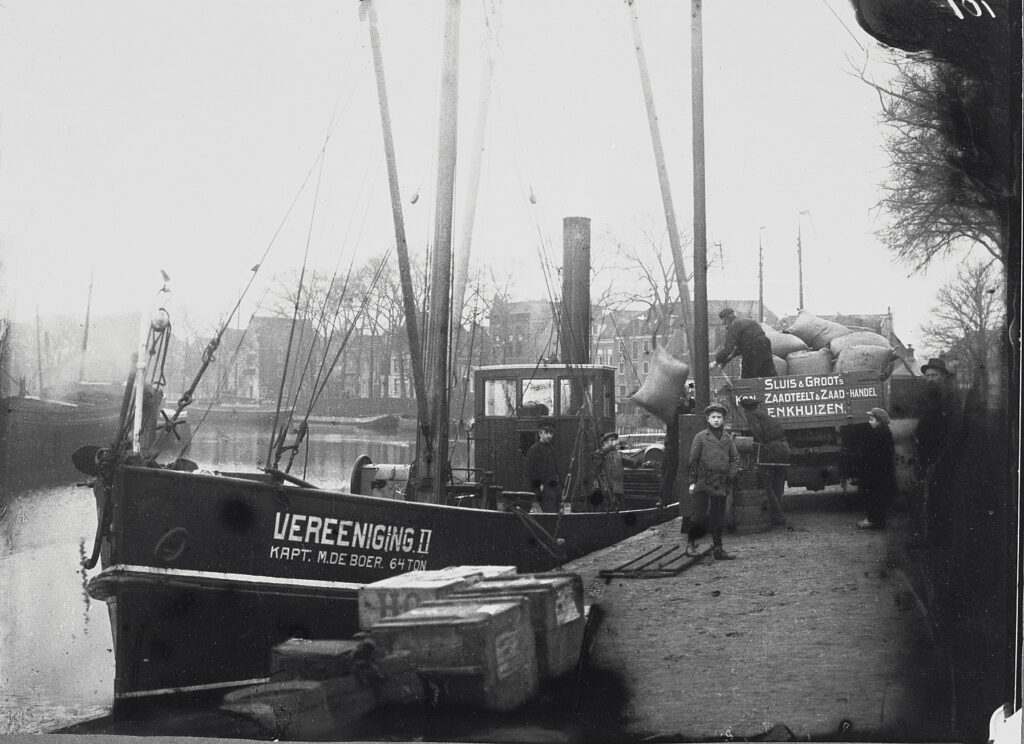Part 1: 1924-2000
WHY IT MATTERS: The International Seed Federation (ISF) celebrates 100 years of operation in 2024. The centennial anniversary is an excellent opportunity to look at the future of ISF. Looking at the past can sometimes help. So, let’s have a look at how the Fédération Internationale du Commerce des Semences (FIS)/ISF evolved from its initial origins. The book that was published for the occasion will be available during the 2024 ISF World Seed Congress. Let’s look here more specifically at the evolution of the roles of ISF over time. This history can very well be split into four almost equal phases. These represent four distinct, major 25-year eras in world history – and within ISF.
This article is Part 1 of a two-part series. In this part, we’ll look at the start of the federation in 1924 and follow its developments all the way to the turn of the Millennium. In Part 2, which will be published in the next edition of this magazine, we will focus on the new roles of ISF in the first quarter of this century and look ahead at the years to come.

First Quarter: 1924 – 1949: Regulating the Business
The reason to get together and establish ISF in 1924, and the primary focus of the new organization for its first 25 years, was a need for self-regulation at the global level. The International Trade Rules were established for forage seeds and subsequently for other crop groups in response to more crop seeds being traded internationally. Even though these rules were meant to increase transparency and reduce conflicts among trading partners, an arbitration system was necessary to enforce the rules, which was indeed developed in parallel. The rules were adopted in 1929; the arbitration system one year later. The FIS-arbitration fit in with the course of global developments. The League of Nations adopted the concept of arbitration in 1923 and the convention for the international enforcement of such arbitration awards was passed in 1927. During that same period, the International Seed Testing Association (ISTA) defined the first international standards for seed testing (1931). That significantly contributed to further promoting international seed trade, the core objective of FIS.

A second association also formed during this first period. Private sector plant breeders established ASSINSEL in 1938: an association specifically aimed at providing breeders with the necessary returns on investment. The existing international breeders’ federation was dominated by public sector breeders discussing scientific developments. FIS, the business-oriented seed traders’ association, was not initially considered an ally in this goal, as it would be the seed producers and traders who would have to pay for the licenses that ASSINSEL was aiming towards. Another reason ASSINSEL didn’t at first consider FIS was its operation reduced to a bare minimum during the Depression in the 1930s and during and after the Second World War.
The roles of FIS were twofold during its first 25 years of existence, both focused on the seed sector: a) provide a platform for seedsmen to meet and discuss joint issues, and b) ensure self-regulation through the Trade Rules and arbitration.
At the time, ASSINSEL was also mainly talking amongst its own members to figure out options for protection, using existing systems like patents, trademarks and copyright. Right after the Second World War, when ASSINSEL re-started in 1946, government officials were involved more closely, which led to an intergovernmental system — The International Union for the Protection of New Varieties of Plants (UPOV) — during the second phase. FIS restarted in 1950.

Second Quarter 1949-1974: The Seed Sector and the Emerging Global Institutions
The following 25 years provided FIS and ASSINSEL with an important role to position the seed sector in emerging international institutions. The organizations’ relations were strong from the start with ISTA, but important new organisations formed in this second phase, with whom FIS and ASSINSEL needed to build connections.

The first such organization was the United Nations Food and Agriculture Organisation (FAO), established in 1945. One of FAO’s key objectives was (and is) to defeat hunger. FAO developed an important focus on investing in public seed production and processing infrastructure for the major Green Revolution food crops, which eventually laid the foundation for private investments in the seed sector. FAO established the International Plant Protection Convention (IPPC) in 1951. These rules on plant health are essential for facilitating the international movement of seed, particularly when IPPC became the standard-setting organization under the SPS Agreement of the World Trade Organisation in 1995. Despite these standards, phytosanitary regulations remain a major concern for traders of seeds and goods.
Also important for the international seed trade were the Seed Schemes for varietal certification of seed quality established by the Organisation for European Economic Cooperation OEEC in 1958 and taken over by the Organisation for Economic Cooperation and Development (OECD) when it was established in 1961. The Schemes promote the production and use of certified seed through harmonised procedures for eight crop groups. Standardized procedures and seed bag label designs provide, next to the ISTA Rules, a solid basis for international seed trade. In later years, OECD also invited FIS to policy discussions about genetically modified crops.

The work of ASSINSEL resulted in a conclusion that existing intellectual property systems would not work and that a special – sui generis – system needed to be developed for varieties in line with the biological nature of breeding as a cumulative innovation system and existing realities in agriculture. In 1961, this finally led to the establishment of UPOV and its international rules for the protection of plant breeder’s rights.
Through positioning the seed sector in these international developments and harmonizing rules and standards in OECD, UPOV and IPPC, FIS and ASSINSEL also contributed to the professionalisation of the seed sector itself. ISF joined forces with FAO, ISTA, OECD and UPOV in 1999 in the World Seed Conference, which led 10 years later to the World Seed Project developing into a public-private Partnership to institutionalise formal seed institutions in a growing number of countries.
Third Quarter 1974-1999: Rapid Development of Plant science and Technology
Rapid scientific developments, initially at the pure science levels but soon with promising applications in plant breeding, were achieved in ISF’s third phase. Cell, developmental, and eventually molecular biology entered the realm of plant breeding, building on tissue culture techniques initiated in the 1960s. Genetic transformation provided broad new horizons. Suddenly, the promise of healthy returns on investment and particularly the expectation of scale advantages in the biotechnologies attracted the interest of hitherto unknown players. Oil and pharmaceutical companies, followed by agrochemical producers, started to take over significant numbers of family-based breeders and seed producers. Eventually, another application of molecular biology — marker assisted selection — found application in a much wider range of crops and breeding companies.
During the same period, global seed trade expanded from US$ 860M in 1970 to US$ 3600M in 1998 due to improved policies (World Trade Organisation, 1994) and expanding information and communication technologies. (This growth path continues).
Both trends affected the structure of the sector. The corporations brought in a more global perspective to crops beyond the forages and vegetable seeds that had dominated the international seed trade until that point. Also, patents, which entered the seed business in the mid-1980s following some court decisions in the U.S. and subsequently adopted with regional variations in other jurisdictions, further strengthened corporate interest.
The resulting structure of the sector, which now included corporations, cooperatives and a wide diversity of family-owned companies, also affected the national/international associations including FIS. Internationally operating companies were increasingly able to provide the FIS secretariat with knowledge and support. This, however, at the same time generated questions about how to properly represent the whole seed sector in all its diversity. The input of the national associations is essential to provide that global view, and thus legitimacy to FIS and later ISF in its dealings with the global policy makers.
Obviously, the roles acquired during the two earlier phases of FIS/ISF’s genesis and development continued to be important in the third quarter of its history. Priorities included updating the Trade and Arbitration Rules and representing the sector in intergovernmental organisations, of which the number continued to increase, with particular emphasis on the Convention on Biological Diversity (1992) and its Cartagena Protocol on Biosafety (2000), and the World Trade Organisation (1995).
Stay tuned for Part 2 which will take a look at ISF from 2000 onwards and even provides a glimpse into the future.













